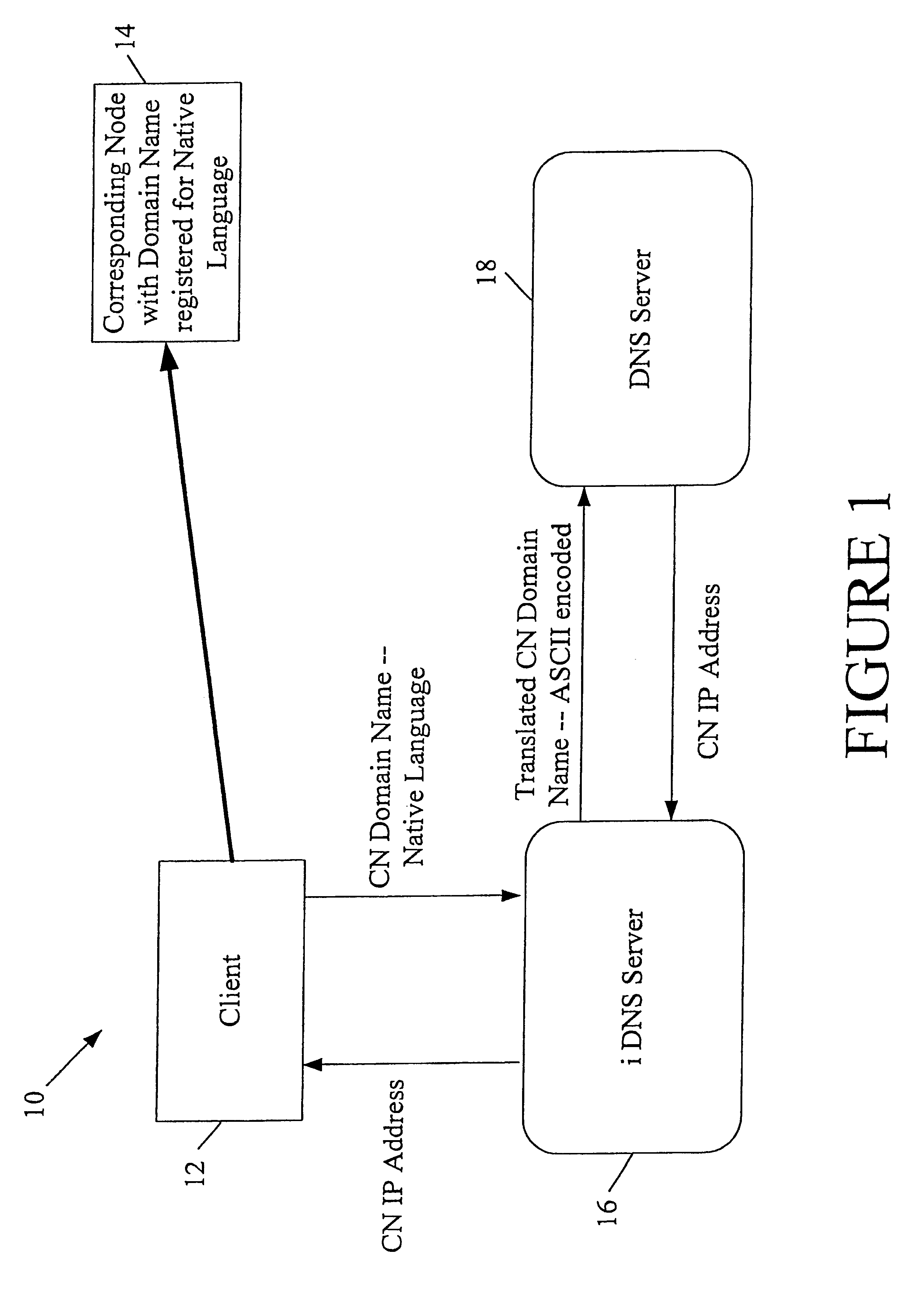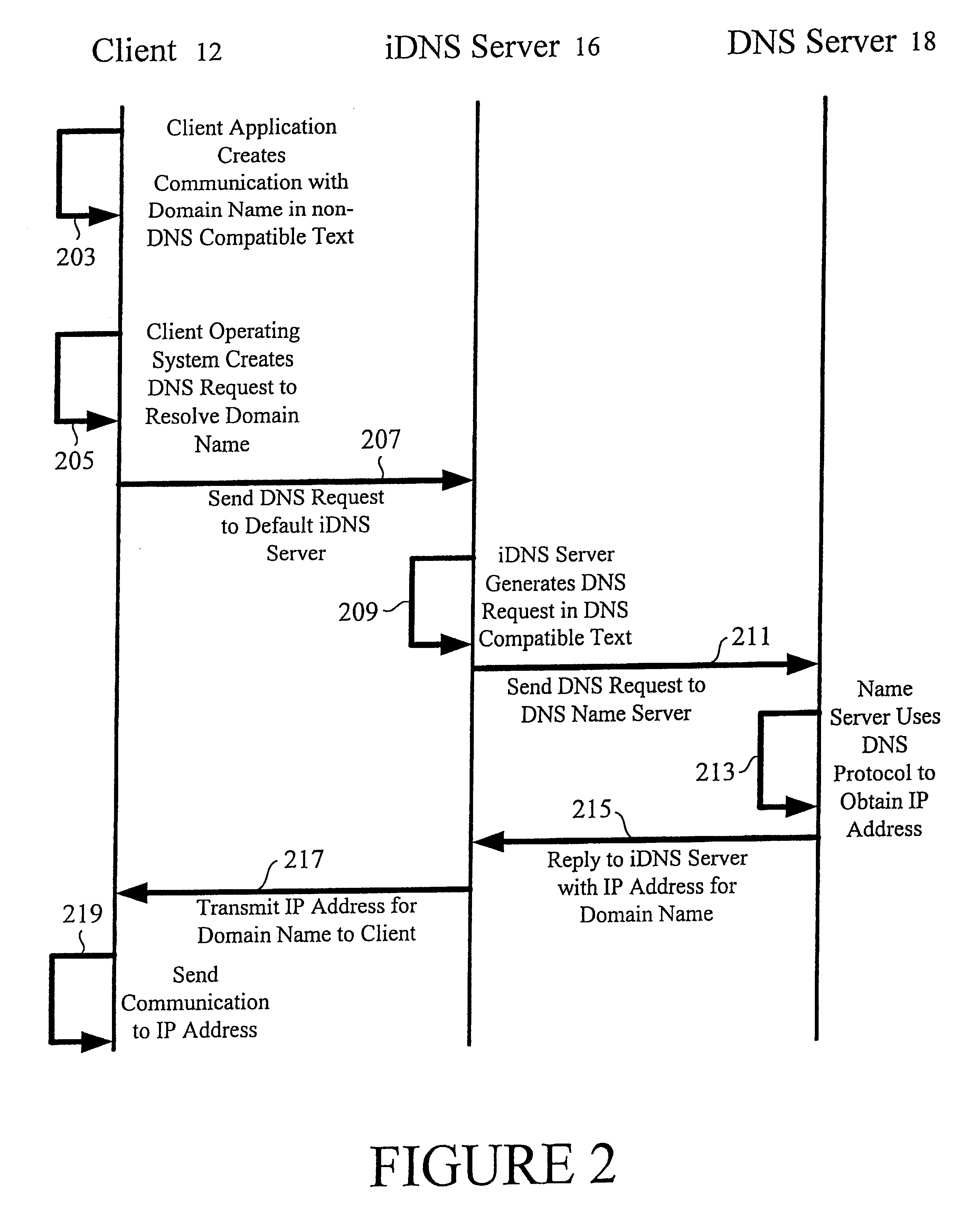Multi-language domain name service
a domain name and multi-language technology, applied in the field of multi-language domain name services, can solve the problems of several difficulties, including the inability to easily distinguish between encodings of big5 with jis or gb2312, and the inability to implement multi-lingual domain name systems on the dns server and client applications, so as to avoid ambiguity when matching takes pla
- Summary
- Abstract
- Description
- Claims
- Application Information
AI Technical Summary
Benefits of technology
Problems solved by technology
Method used
Image
Examples
Embodiment Construction
1. DNS and Unicode
The present invention transforms multilingual multiscript names to a form that is compliant with DNS (e.g., DNS as explained in RFC1035 as of 1999). These transformed names may then be relayed as DNS queries to a conventional DNS server. An exemplary process of how a localized domain name is resolved to its numeric IP address is illustrated by FIG. 1 below. However, before FIG. 1 is described, a few underlying principles and terms will be discussed.
Programs rarely refer to hosts, and other resources by their binary network addresses. Instead of binary numbers, they use ASCII strings, such as www.pobox.org.sg. Nevertheless, the network itself only understands binary addresses, so some mechanism is required to convert the ASCII strings to network addresses. This mechanism is provided by the Domain Name System.
The essence of DNS is a hierarchical, domain-based naming scheme and a distributed database system for implementing this naming scheme. It is primarily used for...
PUM
 Login to View More
Login to View More Abstract
Description
Claims
Application Information
 Login to View More
Login to View More - R&D
- Intellectual Property
- Life Sciences
- Materials
- Tech Scout
- Unparalleled Data Quality
- Higher Quality Content
- 60% Fewer Hallucinations
Browse by: Latest US Patents, China's latest patents, Technical Efficacy Thesaurus, Application Domain, Technology Topic, Popular Technical Reports.
© 2025 PatSnap. All rights reserved.Legal|Privacy policy|Modern Slavery Act Transparency Statement|Sitemap|About US| Contact US: help@patsnap.com



